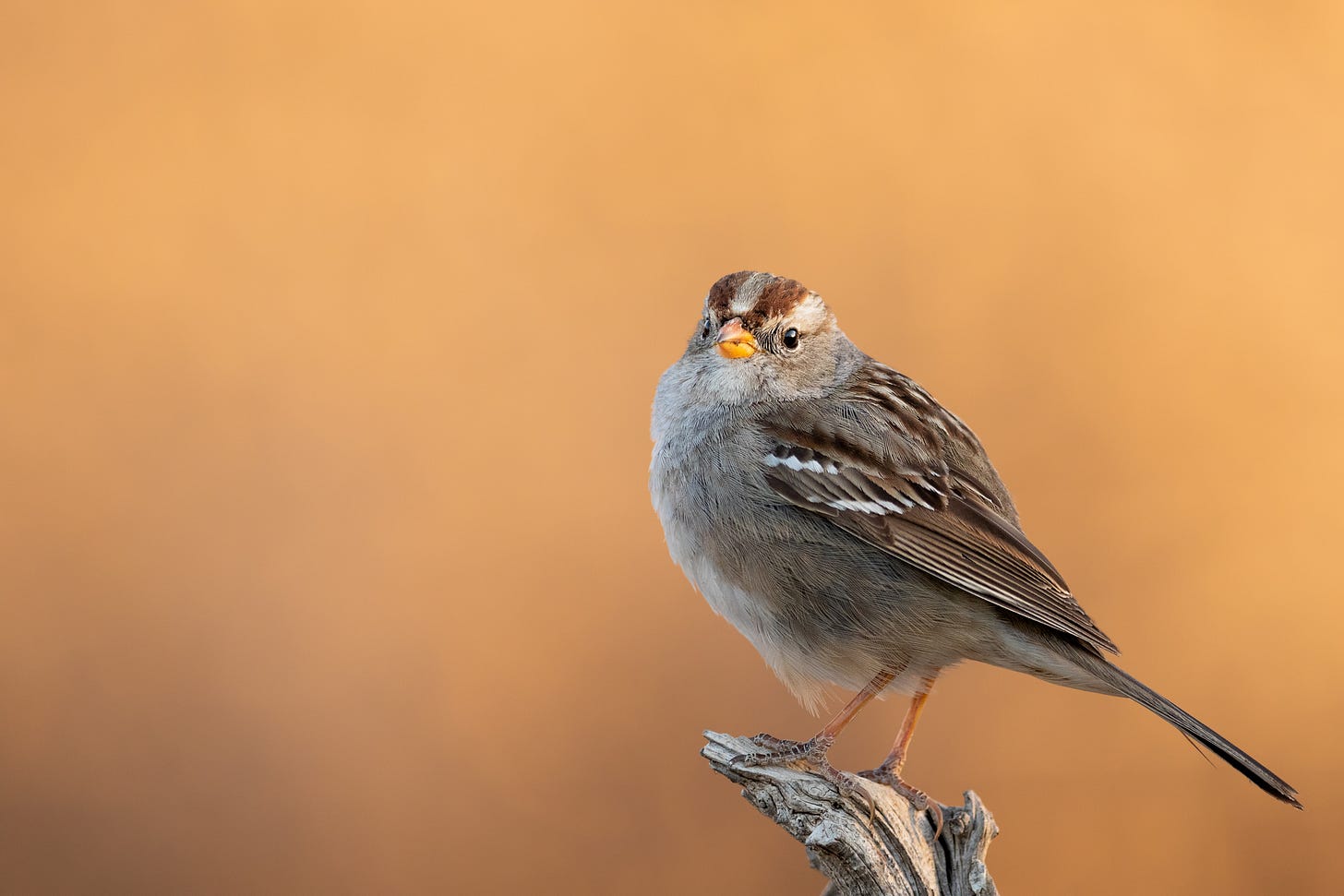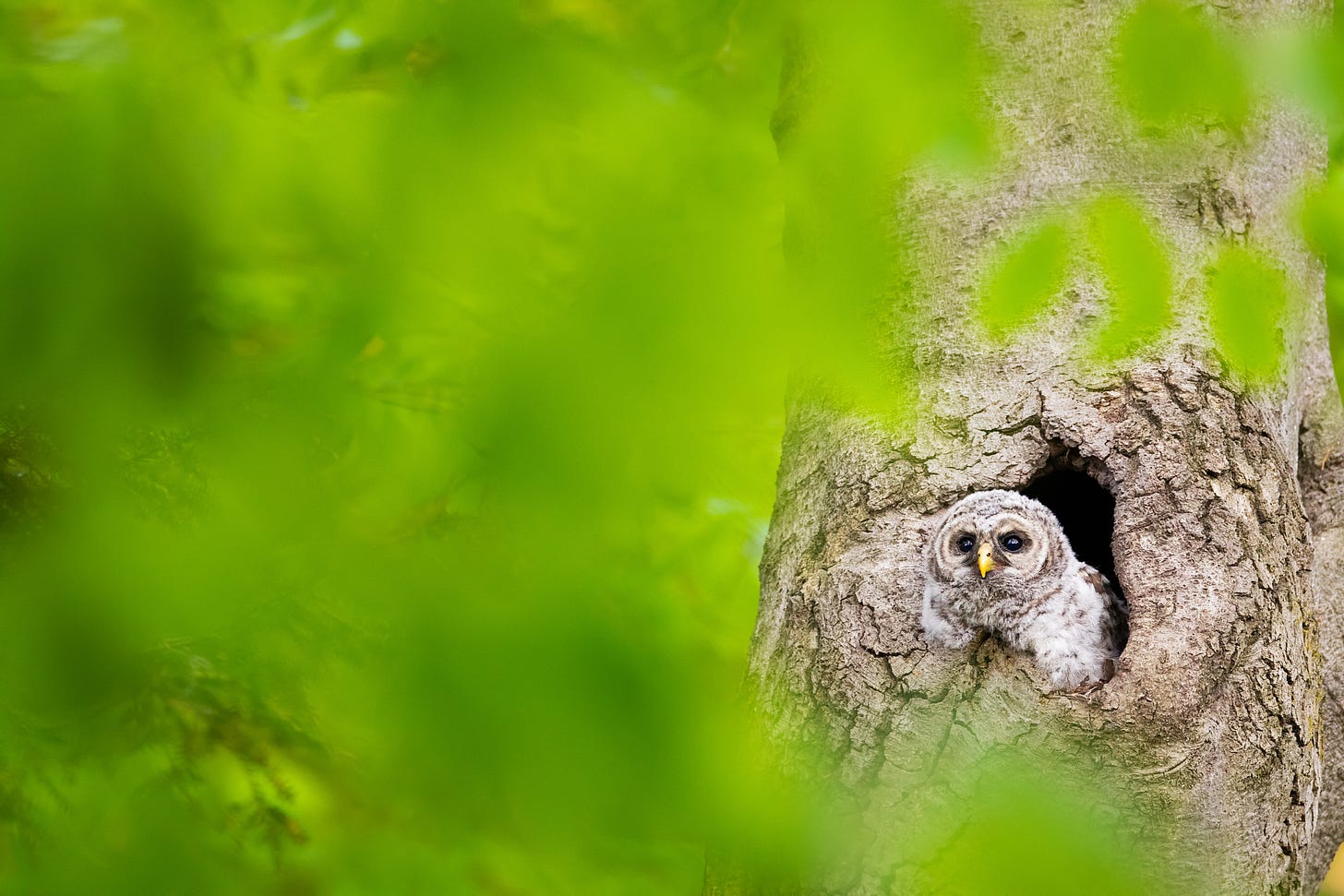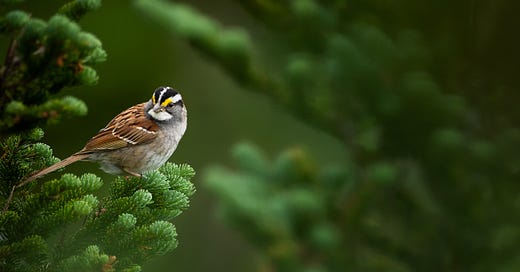Black Birders Week and Cultivating Bird-friendly Environments
We’re all responsible for creating welcoming spaces—for people, communities, and birds alike.
Welcome to the birdy side of the internet! In this week’s edition of Birding University, we begin at the edges of the North American map with a rare and remarkable sighting and then bring it all back home with simple, everyday actions to make your space more welcoming to birds. As we celebrate the rich diversity of birdlife—and the communities that cherish it—we’re also proud to highlight the inspiring efforts of Black Birders Week. There’s something here for every birder to enjoy and explore.
This Week in Birding History: A North American First Record That Is as Sweet as Honey
May 27, 2024 — One year ago this week, birders Zak Pohlen and Brad Benter witnessed something exceptional on Alaska’s remote Shemya Island: the first North American record of an Oriental Honey-buzzard (Pernis ptilorhynchus). Partway through a 13-hour birding day that already included other North American rarities—Crested Auklet, Short-tailed Albatross, Gray Bunting, and Steller’s Sea-Eagle—swarming gulls and agitated cormorants alerted Zak and Brad to the presence of a nearby raptor. The experienced duo quickly recognized it as a honey-buzzard, and close inspection of their photos enabled them to rule out other possible honey-buzzard species.
How can a record feel both long overdue and improbable? Oriental Honey-buzzards reside throughout much of Asia, where the northern population migrates between breeding grounds in southeast Russia and Japan and wintering grounds in Southeast Asia and Indonesia.
As its name suggests, the Oriental Honey-buzzard has a taste for the sweeter things in life. While honey-buzzards occasionally eat small vertebrates, including frogs and birds, they maintain a primary diet of insects. These unique raptors track the movements of social bees and wasps to locate their nests, which they extricate from branches, topsoil, and other locations to consume adult insects, larvae, and bits of comb and honey.

Birding Tip: The Joy of Patch Birding
One of the most inviting things about birding is its accessibility as a hobby. Birds can be observed and enjoyed from practically anywhere in the world. Because birds thrive in nearly every major habitat, many birders enjoy narrowing their focus to a single “patch”—a smaller, specific area they visit regularly to observe and learn about the birds that live there.
Patch birding comes in many forms. For some, a patch might be a favorite birding haunt, perhaps a local hotspot visited daily during migration and shared with hundreds of others. For others, it could be a quarter-acre suburban backyard or even the view from a small city apartment balcony enjoyed in solitude. Whatever you consider your patch, narrowing your focus to a smaller area can offer rich rewards: finer-scale data about the birds that pass through or live there, and a deeper, slower, often more thoughtful connection to the hobby.
Now, there’s no right way to bird a patch. As mentioned previously, patch birding comes in many forms. If you’re curious about starting —or deepening— your patch practice, here are some fun spatial scales to consider:
Your home and nearby green spaces: Whether you live on a 100-acre farm, in a metropolitan apartment, or an urban high-rise, birding from home is often the most accessible option. It’s a wonderful way to feel connected to nature through the rhythm of your daily life.
1-mile radius: Draw a circle one mile around your home or a favorite location. This scale encourages regular observation while offering a surprising mix of habitats and species.
5-mile radius: Expanding your patch to five miles adds more variety while keeping your birding local and personal. It’s a great way to deepen your sense of place and explore lesser-known corners of your community.
Single-town birding: Centering your patch on the limits of a town or city offers a civic-scale connection to local green spaces—and often to the conservation efforts and community science projects tied to them.
County-level birding: Covering a larger geographic area while remaining rooted in a shared ecosystem and administrative boundary, county birding can feel like a rewarding mix of personal and regional birding.
Each level of patch birding offers its unique opportunities and challenges. While this list is far from exhaustive, it’s a helpful starting point for anyone looking to scale down their birding practice and learn more about nature unfolding closer to home.
Editor’s note: We recognize that not everyone has access to a yard, private property, or nearby green space. In sharing this section, we’ve aimed to offer ideas inclusive of different living situations and access levels—whether you have a backyard, a balcony, or simply a view from a window.

Bird’s Eye View: Black Birders Week – Grounded in Community
Black Birders Week returns this year from Sunday, May 25, to Saturday, May 31, offering both a celebration and a challenge: to see nature not just as a backdrop but as a space where belonging matters. Now in its sixth year, the event—organized by The Black AF In STEM Collective—was born in 2020 from an urgent and joyful need to spotlight the long-standing connection Black people have to the outdoors and to push back against the persistent barriers that too often deny them safe, full access.
The spark came from the community—Black scientists, nature lovers, educators, and birders who knew their experiences were shared but too rarely seen. In response to a widely publicized incident of racial profiling against Black birder Christian Cooper, they organized. What followed wasn’t just a reaction to an event, but a movement. Black Birders Week emerged as a platform to celebrate presence, affirm identity, and shift the narrative around who is seen, heard, and welcomed in nature.
This year’s theme, “Grounded in Community,” centers around Black joy and liberation and speaks to the strength of gathering, the power of shared knowledge, and the resilience of connection. For many Black birders, nature is more than a pastime—it’s a place of peace, history, and healing. When those connections are nurtured across our communities, they only grow stronger, and everyone benefits. Through local bird walks, virtual events, and storytelling, this year's Black Birders Week continues to uplift and amplify Black professionals in natural resources and the environment. It offers career connections, builds community, and inspires new audiences to connect with nature and the stories of Black conservationists across the African diaspora.
The birds of focus for this year’s Black Birders Week are the sparrow family, which embodies this year’s spirit beautifully. Often dismissed as a common group of “little brown birds,” sparrows are frequently overlooked—yet they are adaptable, social, and essential to nearly every avian ecosystem they inhabit. Like sparrows, Black birders have long been present in our outdoor spaces—thriving, leading, and contributing. Choosing sparrows as this year’s symbol is a call to look again, notice what’s been there all along, and honor the resilience of birds and people.
Black Birders Week is a reminder, an opportunity that calls on all of us to help build a more inclusive outdoor culture. That might mean attending an event, sharing a story, or simply listening and learning. Institutions and allies play a critical role in making representation the norm, not the exception, by directing mentorship, funding, and opportunity toward equity. At Birding University, we’re proud to support the leaders and participants of this movement by helping to amplify their voices. Join the conversation at #BlackBirdersWeek and #BlackBirdersWeek2025, and celebrate the power of community to reshape who feels welcome—and who thrives—in the outdoors.

Birds & Nature: A Simple Guide to Creating Bird-friendly Spaces
Many believe creating a bird-friendly space begins and ends with a bird feeder. While feeders—filled with seed, suet, or nectar—can help, they’re just one small piece of a much bigger picture. A truly welcoming space supports birds’ daily needs and sustains them through every stage of their annual cycle, including breeding, migrating, and molting.
Providing everything birds need to thrive might sound overwhelming, but here’s the good news: you don’t need a backyard, a big budget, or a perfect plan to make a meaningful difference. You just need to start. Thankfully, you have us to help guide you along the way.
Think of this as your Bird-Friendly Spaces 101 course at Birding University. Whether you’re a backyard beginner, a balcony birder, or just bird-curious as you wander through your local park, this is your launching pad. Let this be your sign if you’ve been waiting for the “right moment” to do more for birds.
The Four Essentials of Bird-Friendly Spaces
At its core, creating a bird-friendly space means providing four essentials:
Food: From seeds, nuts, and berries to the nectar and insects that birds rely on to survive.
Water: Clean, reliable sources for drinking and bathing.
Shelter: Dense plantings, brush piles, dead trees, and hidden perches to rest, nest, and stay safe from predators.
Safety: A pesticide-free environment, plus measures to prevent window collisions and protect birds from outdoor cats and other hazards.
Why Native Plants Are Your Best Friend
The best part? You can provide these four essentials through one simple, powerful strategy: planting native plants. Native plants have evolved naturally in your region, perfectly adapted to local soils, climate, and wildlife. They are the backbone of healthy ecosystems because they provide natural food sources like berries and seeds, and support the insects that many birds have evolved to depend on during critical parts of the year.
Native plants also offer safe shelter and nesting materials, making them a triple threat in the best way possible. Even if you don’t have space for a garden, a single well-chosen potted native plant, a flowering vine on a balcony, or a native tree in a small yard can invite birds into your space. It’s proof that you don’t need acres to create impact—every little bit counts.

Water, Shelter, and Safety: Simple Steps That Matter
Providing clean water is easy and essential. A shallow dish, a birdbath, or a slow-drip made from an old milk jug can make a huge difference, especially in hot or arid places like the American Southwest, where natural water may be scarce. Just remember to keep the water fresh and clean. Water features are also one of the best ways to attract species to your space that would otherwise go undetected. Not every species will come to a bird feeder.
Shelter means more than trees. Leaving brush piles, fallen leaves, or standing dead snags (when safe) provides birds with vital spaces to forage, nest, rest, and hide from predators—all while supporting healthy insect populations that birds rely on. Don’t be so quick to pick up your yard!
Safety is critical. Avoid chemical pesticides, herbicides, and rodenticides—they harm the insects and small mammals that birds depend on and can poison the birds themselves. To prevent one of the leading causes of bird injury and death—window collisions—consider using decals, screens, or external netting to make your glass visible to birds. The National Audubon Society and the American Bird Conservancy have great resources to help reduce birds colliding with glass.
Editor’s note: Because window collisions are a significant issue, we’ll cover this topic in greater detail in an upcoming newsletter.
You Don’t Need a Yard to Help Birds
Whether you live in an urban apartment with a sunny balcony, a suburban cul-de-sac with a small patch of lawn, or a rural homestead, you can do something to help birds. From urban rooftops and hellstrips to sprawling green spaces and neighborhood gardens, every action adds up. No matter the scale, your efforts build a network of bird-friendly spaces across communities.
When to Start? The Answer Is Now
Wondering when to begin? The answer is right now. In warmer regions, birds and people slow down in summer heat, but shaded native shrubs and steady water remain lifesavers. In cooler climates—like the Northeast, Great Lakes, and Pacific Northwest—this is prime planting season for native perennials, shrubs, and trees.
If planting isn’t an option right now, for whatever reason, no worries. Use this time to observe your space—notice where the sun shines, where moisture lingers, and where birds like to hang out. Observation is the first step to creating a thriving habitat.
Resources to Get You Started
Here are some trusted resources to explore and support you on your journey. And if you know others, please share them in the comments below!
Audubon’s Native Plant Database: Enter your ZIP code for plants tailored to your region.
National Wildlife Federation’s Garden for Wildlife: Great for inspiration and learning about certified habitats.
Homegrown National Park: Wonderful at raising awareness and sparking inspiration to tackle the biodiversity crisis—one native plant (and invasive pulled) at a time.
What’s Next?
This guide on creating a bird-friendly space is just a primer—there is much more to explore. In future articles, we’ll dive deeper into topics like plant selection, water features, and making our spaces safer. In the meantime, we’d love to hear from you. Share your favorite native plants or ask your most significant questions in the comments below. Together, we can build vibrant, bird-friendly spaces—one plant, one perch, and one season at a time.

Weekly Poll
Thanks for Reading
That’s a wrap on this week’s edition of Birding University! Whether you’re inspired by the incredible story of North America’s first Oriental Honey-buzzard, dreaming of your own patch birding adventure, or ready to make your space more bird-friendly with native plants, we hope this bulletin has sparked your passion and curiosity. This week also spotlights Black Birders Week, a vital movement celebrating diversity and inclusion in birding and nature. We encourage you to support and uplift this fantastic community.
We can’t wait to share more stories, tips, and celebrations of birds and nature with you next week. Until then, keep your binoculars close and your ears open—every bird sighting and small action helps create a richer, wilder world for us and the birds.
* Please visit Phil Stollsteimer Photography for more amazing bird photography.






Can't say how much I love this edition of Birding University! All my favorites!!!